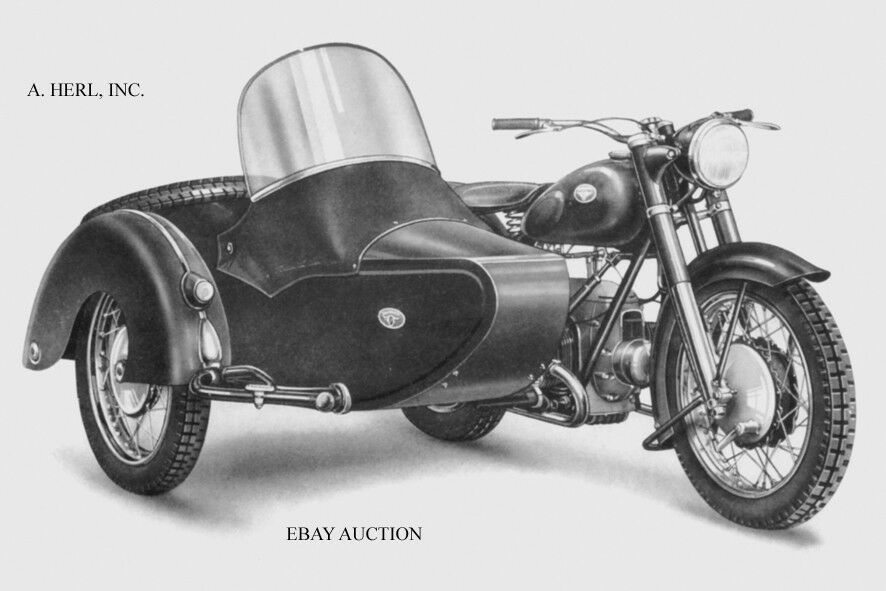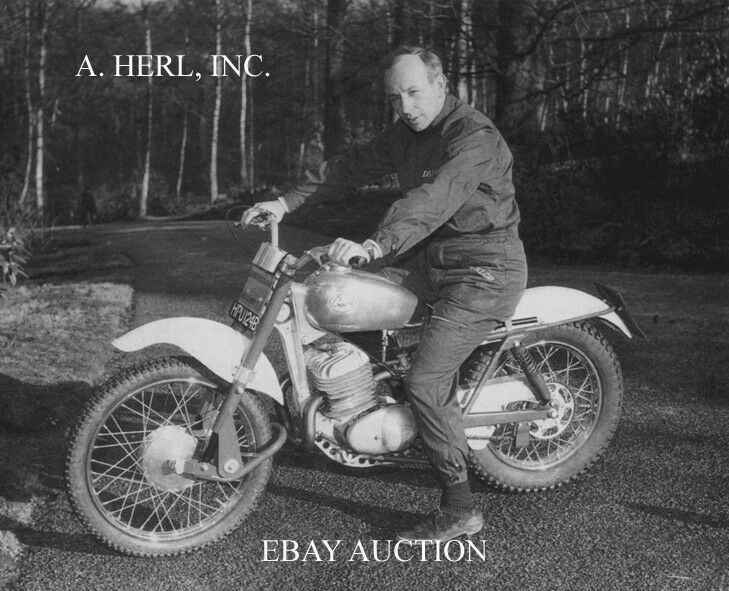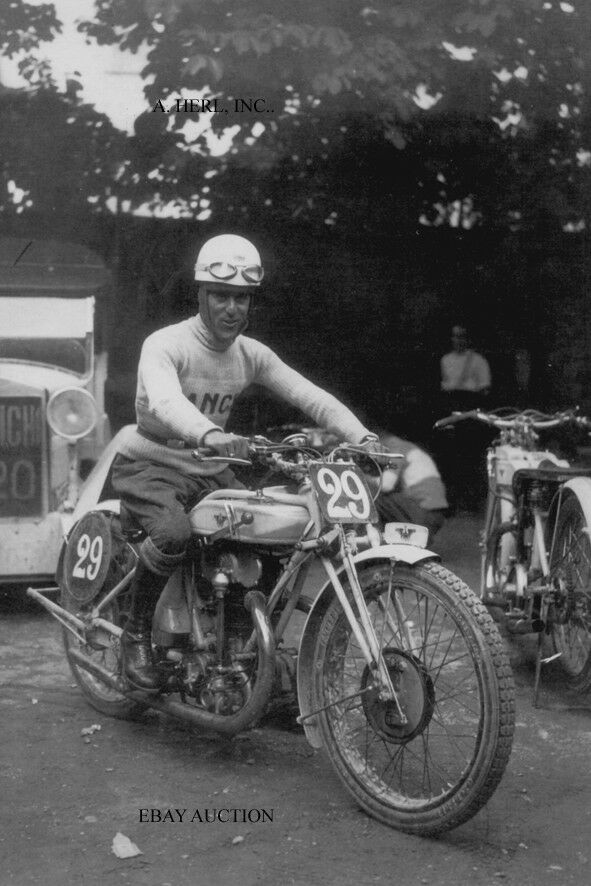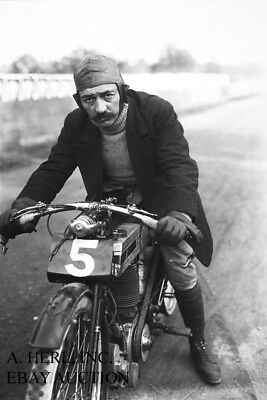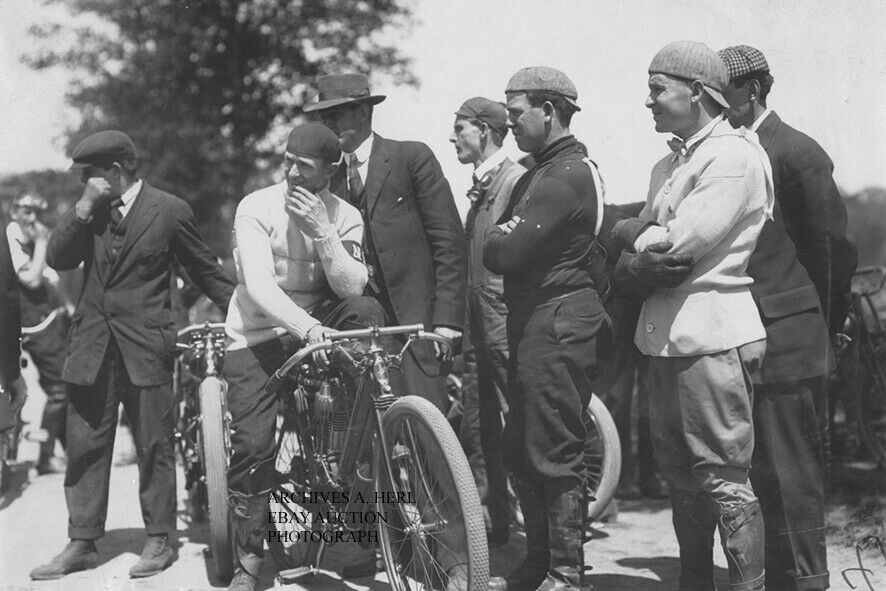-40%
Zundapp KS 601 w. Steib TR500 sidecar 1950s - motorcycle photo press photograph
$ 5.14
- Description
- Size Guide
Description
A superb and rare photo of the impressive “Green Elephant”Zündapp
KS
601
with
Steib TR 500 sidecar
. The Zundapp KS 601 was nicknamed “Green Elephant” because of its incredible reliability. It was in production between 1951 and 1958.
Zündapp
was was originally founded in 1917 in Nuremberg by Fritz Neumeyer, together with the Friedrich Krupp AG and the machine tool manufacturer Thiel under the name "Zünder- und Apparatebau G.m.b.H." as a producer of detonators. Neumeyer also had the vision of offering a reliable high quality motorcycle under the Zundapp name. He succeeded to the point that Zundapp was producing more than 28,000 motorcycles per year by 1929. Things didn't go so well during the world depression but Zundapp held on and emerged in 1933 with a host of new models designed by engineers Richard and Xaver Küchen, including the K models. The fledgling K series included opposed twins of 400 and 500 cc nominal displacement, and opposed four cylinder motors of 600 and 800 cc's, all flat heads. The 1933 K500 produced 12.5 HP while the K600 and K800 boasted 16 and 20 HP respectively, both at 4300 Rpm. His desire to build a reliable inexpensive bike resulted in the Zündapp KS 601. The products of Zundapp-Werke's Nürnberg-Schweinau plant, these bikes embodied many of the features that would define the KS601 including shaft drive via a novel duplex chain drive transmission, although these early versions were stick shifts. They were considered by many to be technically superior to their contemporaries and soon earned a reputation for endurance and reliability. These bikes had many of the features of the Zündapp KS 601 that would follow. In 1935, the year the firm's founder died, Zundapp introduced the KS500 model, or Kardan Sport 500. Kardan referred to the U-joints on the shaft drive and sport referred to the new overhead valve motor which produced 24 HP at 5200 Rpm. Like the KS601, these motors had cast iron cylinders, aluminum heads and valve covers, with a carburetor on each cylinder drawing air through a single filter beneath the upper engine cover. Also, these were the first Zundapps available with a foot shifter. These motors had cast iron cylinders like the Zündapp KS 601. In 1938 the KS600 was brought into production. The cylinders shared a single carb but the motor developed 28 HP despite that. 18,000 KS600's were built between 1938 and 1940 with most going to the armed forces. These bikes retained the girder front suspension, apparently with friction dampers although air/oil shocks were played with at some earlier point. Telescopic forks were introduced with the Zündapp KS 601. With war immanent the Zundapp factory jumped headlong into design of the super heavy KS750 which entered production in 1941. Intended strictly as a sidecar machine the KS750's conventionally geared transmission, as opposed to the hallmark Zundapp duplex chain tranny, was shifted via two hand levers on the side of the gas tank. Another controlled a differential which in normal operation delivered 60% of the torque to the bike's rear wheel and 40% to the sidecar wheel and could be locked when negotiating difficult terrain. This differed from the Zündapp KS 601's duplex chain drive. To fully dispel the myth that Zundapp is a derivative of BMW, much less an inferior copy, the heavy sidecar KS750's were so superior to BMW's offering that the German government compelled BMW to copy the important technical details, against their strident protest. The Zündapp KS 601 was pretty rugged in its own right. From 1942 the KS750 was the only motorcycle Zundapp built with total production exceeding 18,000 units. During the war the factory also built aircraft parts, bomb fuses, and other ordinance. It was basically bombed out of existence toward the end of WWII. After reconstruction of the buildings production focused first on grain milling equipment, then sewing machines. Motorcycle production did not resume until 1947, mostly dedicated to smaller displacement sidecar machines to fill the need for inexpensive transportation in post war
Germany
. Found 1949 Zundapp began preliminary design work on an entirely new version of the KS model motorcycle. This new design had telescopic fork as opposed to the traditional Zundapp parallel four link fork, and plunger rear suspension as a major change, not to mention improvement, from no rear suspension at all. This was the predecessor of the Zündapp KS 601. Early efforts involved a small displacement engine but Zundapp engineers began playing around with installing the wartime KS 600 motor in the frame. Ernst Schmidt, chief designer, liked the idea. In late 1949 the first prototype emerged, painted black, with a beefed up chassis to handle the larger motor. The larger motor lead to the introduction of the Zündapp KS 601. In early 1950 a second prototype was completed. With an engine that differed from the original KS600 in many respects the bike was christened the
Zundapp KS601
. To further distinguish it, not only from BMW but also prior Zundapps, the black frame now sported fenders, tool box, fuel tank, fork cover, and head light housing appointed in the famous Zundapp lime green. The second Zündapp KS 601 was Zündapp lime green. The newly designed 597 cc motor, with two Bing carburetors, produced 28 Hp at 4700 Rpm with peak torque of 33.6 Ft. Lbs at 4000 Rpm. This was notable power, more than the Volkswagens of the time, and made the Zundapp KS601 an immediate hit with enthusiasts. The motorcycle's unique appearance and its new engine earned it the well known title of "Green Elephant". As with the production bikes, the telescopic forks of the new chassis had almost 5" of travel but furnished no dampening. A shock absorber mounted on the triple clamps between the fork tubes and bearing on the heavy front fender directly above a strong brace provided compression dampening. In the rear, the plunger type suspension had about 2.5" of undampened travel and was carried into production unchanged, the only exception being the axle trailing the shock housings rather than leading as on the prototype. The Zündapp KS 601 had plunger rear suspension. Power was transmitted from the engine via a two disc dry clutch driving the peculiar but extremely smooth shifting and reliable duplex chain drive transmission, shown in the sectional view on the previous page, through a heavy flywheel. The shaft then delivered power through a spiral bevel final drive pinion to the spiral bevel ring gear, the tapered final drive spline and, finally, the wheel hub. The Zündapp KS 601 front and rear wheels are identical. Interestingly, the Zundapp KS601 wheels were designed to interchange front and rear. Both have the final drive spline in the hub to accommodate frequent rotation to distribute tire wear. The first production KS601 left the factory in the summer of 1951 after extensive and successful testing of the prototype versions. This newest Zundapp received enthusiastic reviews from the various motoring magazines of the time. It proved to be popular not only with the motor sports crowd, but also with average owners who quickly came to appreciate its rugged dependability. The production Zündapp KS 601 was enthusiastically welcomed. In 1954, a father and son team rode a Zundapp KS601 on a highly publicized 20,000 mile trip around the world, after which the bike was dismantled by a group of motorcycle journalists and factory technicians. They reported the machine showed surprisingly little wear after the incredibly abusive journey, and were awed by its durability in conditions they felt would have destroyed many of the bikes offered by Zundapp's competitors. The Zündapp KS 601 survived a round the world trip with flying colors. Despite such positive attention from the press, sales of the Zundapp KS601 were lagging considerably behind similar models from BMW. The factory adopted a number of strategies in the attempt to boost interest, including introduction of the KS601 Sport with 34 horse instead of the standard 28. They offered a number of additional color choices and targeted the
United States
in a campaign to get a toe hold in that growing market. All to no avail. Part of the issue was Zundapps being widely viewed as heavy duty sidecar machines. Despite handling that was superior even to BMW's they just couldn't shake that reputation with the solo riders. Also, the world economy was picking up and more people could afford to purchase cars, which had obvious and attractive advantages over motorcycles for practical day to day transportation. The production Zündapp KS 601 was enthusiastically welcomed. In a final attempt to bolster sales the Zundapp KS601 Elastic was introduced in 1957, featuring the Sport engine and a new swing arm rear suspension. Aimed exclusively at the
US
market, this fine motorcycle was too little too late. Production of the KS601 in all its flavors from 1955 to 1958 failed to reach 1000 motorcycles. Total production across all the years of its manufacturer just barely topped 5000. In 1958, Zundapp sold the
Nuremberg
factory to Bosch and production of the Zundapp KS601 ceased. Production Zündapp KS 601 ended in 1958. Devoted Zundapp KS601 owners formed organizations all over
Europe
. One such group began an annual winter ride in 1956 that survives to this day, attracting tens of thousands of participants, but necessarily few on KS601's. The Zündapp KS 601 has a devoted following. As the years passed parts became more difficult to obtain inspiring numerous approaches to keep the venerable KS601 going. These included clubs organized to purchase large lots of spares and forays into modification of parts from other vehicles to be used in the Zundapp. Now, thanks to the KS601's well earned and enduring popularity, aftermarket parts sources are cropping up all over
Europe
with a few outlets beginning to appear in
North America
.
Like many other automotive factories, Zündapp used to retouch original photos to make the bike look as smart as possible, deleting clutter and loose cables to give a nice pristine image of the motorcycle. In the case of this KS 601 photograph, a white background also was added by the artist that had this great, precise yet difficult job. The result is a photograph that looks as historic as it does gorgeous!
We have more photos, also listed on Ebay, of other bikes, and various motorcycle (world) champions on various kinds of machinery. Please check out our auctions and take advantage of our shipping discount! The auction selection is refreshed and changed continuously.
This is your rare chance to own this non period photo that reflects a very interesting and historic piece of motorcycle history. Therefore it is printed in a nice large format of ca. 8" x 12”
(ca. 20 x 30 cm).
Check out our auctions or contact us for more motorcycle (racing) photos!
We have more photos listed on Ebay, also motorcycle (racing) and car (racing) photos! Check them out and use the shipping discount! You can always contact us for any requests.
Check out our other Ebay auctions or contact us for more motorcycle (racing) photos! Combine auctions and save on shipping.
Contact us for more motorcycle photos of the old and famous American and European motorcycle brands and save on shipping!
Shipping costs will only be $ 7.00 regardless of how many photos you buy. For 5 or more photos, shipping is free!
(Note: A. Herl, Inc. does not appear on photo, for ebay purposes only)
No copyright expressed or implied. Sold as collectable item only. We are clearing out our archives that we have gathered from various sources.
All items always sent well protected in PVC clear files
and board backed envelopes.
We have photographs that came from professional collections and/or were bought from the original photographer or press studio! They are all of professional and excellent quality.
After many decades of professionally collecting photographs and posters we are clearing out our archives. They make the perfect gift and are perfectly suited for framing. They will look gorgeous unframed and will be a true asset nicely framed with a border. They are a gorgeous and great asset in every home, workshop, workplace, restaurant, bar or club!
First come - first served. And you can always contact us for your requests. Please ask any questions before the auction ends.
